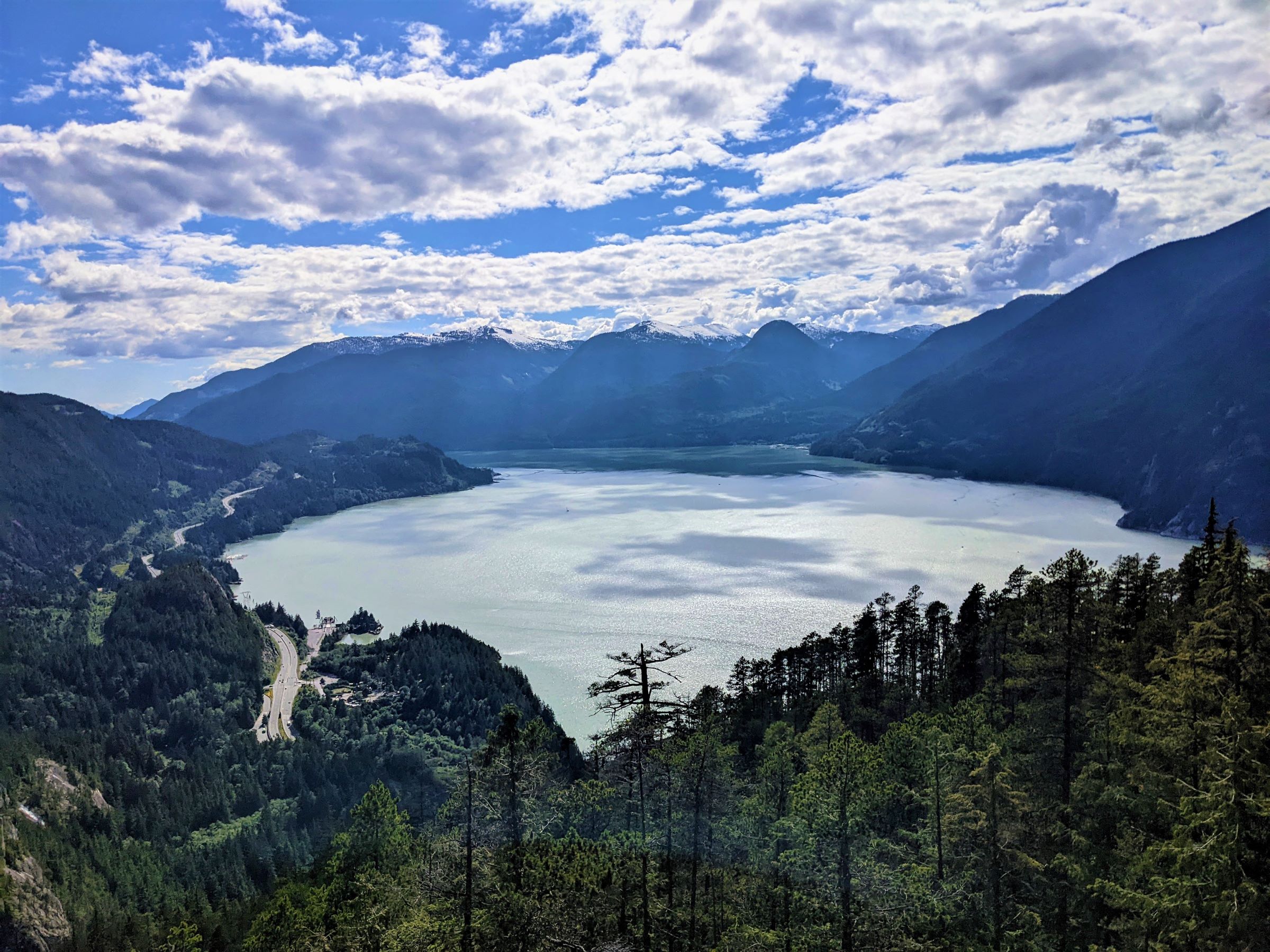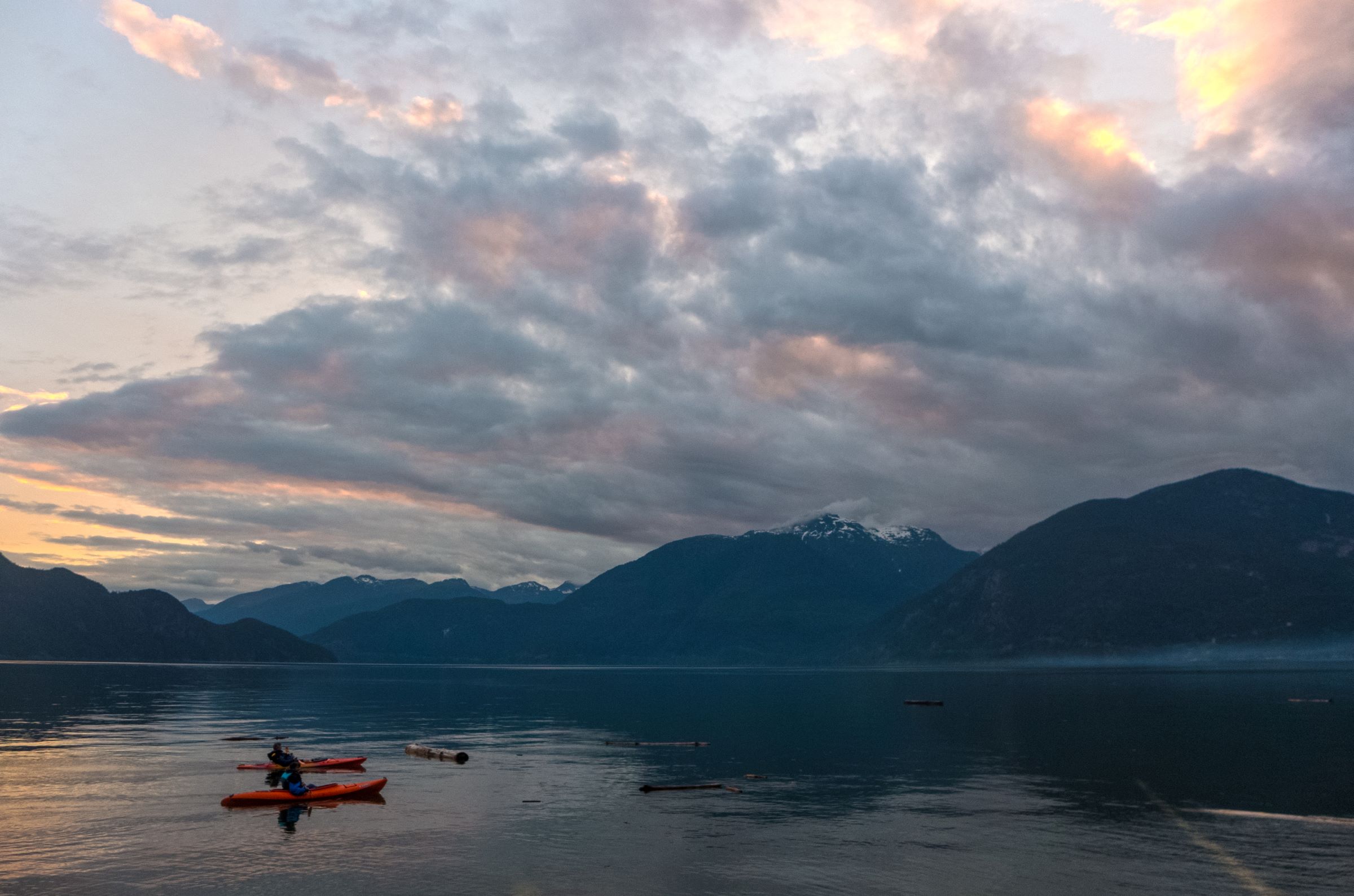
In September 2021, the United Nations Educational, Scientific and Cultural Organization (UNESCO) designated Átl’ḵa7tsem/Howe Sound and the surrounding watershed as a biosphere region (also referred to as a “biosphere reserve”).
The designation was the result of years of organizing and hard work from local communities and promised to bring increased visibility, environmental protection and investment in this magnificent region. With the biosphere reserve celebrating its second anniversary, it is a good time to take stock of what the designation has enabled in the region.
Átl’ḵa7tsem/Howe Sound is a coastal fjord just north of Vancouver, within the territories of the Skwxwú7mesh Uxwumixw (Squamish Nation). The fjord is surrounded by forested mountains and salmon-spawning rivers, and its waters are home to million-year-old glass sponge reefs, rockfish, herring and whales.
The Sound has faced a long history of industrial pollution from the Britannia Mine and run-off from pulp and paper mills. However, the area has also seen concerted efforts in recent years from the Squamish Nation, Crown governments, community members and conservation groups to clean up the Sound. These efforts led to these different governments and groups coming together to support the area’s nomination as a biosphere region.

Credit: Howe Sound Biosphere Region Initiative Society
Why a Biosphere Region?
UNESCO created the biosphere reserve / region designation to integrate conservation of nature and culture with sustainable development, and to promote research and education. The designation does not in itself confer legal protections, however the area must meet requirements under the Statutory Framework and Technical Guidelines for Biosphere Reserves.
The Technical Guidelines outline the use of the following three zones within a biosphere reserve/region:
- Core areas that are legally protected (under a country’s own laws) for long-term conservation;
- Buffer zones surrounding those core areas that are used for ecologically-friendly activities like research and education; and
- Transition areas that are intended to foster sustainable economic and human activities. The inclusion of areas that allow sustainable development is one of the primary differences between biosphere regions and other types of protected areas.
A UNESCO biosphere region designation elevates the status of the area through increased international recognition and local awareness, and increased funding. This recognition and investment can help build capacity and community engagement in environmental decision-making.
Map via Howe Sound Biosphere Region Initiative Society
How has the designation benefitted Átl’ḵa7tsem/Howe Sound?
Although governments, citizens and civil society have made significant efforts towards sustainability and conservation in Howe Sound for several decades, the biosphere region designation has brought increased efforts and investment to the region. Below is a short list of changes that have occurred since the area was designated in September 2021.
1) Conservation. The Átl’ḵa7tsem/Howe Sound Biosphere Region (AHSBR) encompasses 2200km2, of which 84% is terrestrial and 16% is marine. At the time of designation, approximately 23% of the terrestrial area within AHSBR was legally protected under Canadian law, while less than 0.5% of the marine area was legally protected. The protected marine areas were all marine refuges that Fisheries and Oceans Canada (DFO) put in place to protect Howe Sound’s glass sponge reefs. DFO is now working to increase the number of marine refuges in the area. The Squamish Nation is also developing its own marine use plans for Átl’ḵa7tsem/Howe Sound, a project which predates the area’s designation as a biosphere region, and which could lead to further legal protections in the area.
2) Funding and Capacity. In 2022, the federal government announced that it would provide more than $926,000 over four years to the Howe Sound Biosphere Region Initiative Society (HSBRIS), as part of a larger conservation funding initiative to support the local groups that manage all 19 biosphere regions across the country. This investment has supported the HSBRIS in working with other community organizations on a number of projects, including:
- Research and monitoring, including research on fish creeks, rockfish and species at risk, and developing wildlife connectivity corridors.
- Developing a Biosphere Terrestrial Atlas, which will map out ecological values and human-uses of land within the biosphere region, to mirror the Átl’ḵa7tsem/Howe Sound Community Map that has already been developed for marine areas.
- Identifying new potential sites within the region to protect and conserve, towards Canada’s targets of protecting 25% of land and water by 2025 and 30% by 2030.
3) Community Engagement. Biosphere regions are meant to bring more funding and capacity into the regions and to support socially-inclusive environmental decision-making. The HSBRIS has developed a number of projects to support dialogue between community members and stakeholders in Howe Sound through the Howe Sound Conservation Network, Howe Sound Community Forums, and a Roundtable to support the Bioregion.
What remains to be done?
One of the key challenges facing the Átl’ḵa7tsem/Howe Sound Biosphere Region is how to maintain the health of its lands and waters as the region faces increased pressures from industrial and residential developments. For example, the Woodfibre Liquefied Natural Gas (LNG) project, which received certain federal and provincial approvals before the Biosphere Region was designated, would introduce a pipeline and LNG tankers for the first time to Howe Sound.
The Technical Guidelines for Biosphere Reserves note that “at the time of nomination, not all activities need to be sustainable” and that potentially harmful activities can be included where they “meet high environmental safety standards.” Thus, the potential operations of Woodfibre and other industrial activities that may take place in the Sound would need to be closely monitored to ensure they meet the highest standards of environmental protection.

Kayakers in Howe Sound (Photo: Andreas Christen / Flickr Creative Commons)
Conclusion
There is much to celebrate in Átl’ḵa7tsem/Howe Sound, including the ongoing dedication and leadership of the Squamish Nation and Crown governments, civil society and community members to protecting the Sound. The UNESCO Biosphere Region designation has given Átl’ḵa7tsem/Howe Sound greater profile and investment, and this is turning into real benefits for biodiversity on the land and in the water.
However, as is always the case, the designation alone is not enough – it will require the participation and commitment of the community to make sure that the Átl’ḵa7tsem/Howe Sound Biosphere Region continues to live up to its name.
* West Coast Environmental Law acts as an Advisor to the Howe Sound Biosphere Region Initiative, providing legal information on marine governance and conservation.
Top photo: Stephanie Hewson
